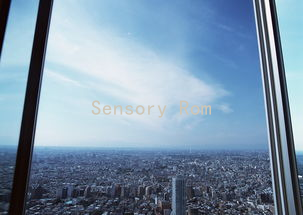Creating a Safe Space: Communication Techniques for Partners with Bipolar Symptoms
Creating a Safe Space: Communication Techniques for Partners with Bipolar Symptoms
Navigating a relationship where one partner has bipolar disorder can be particularly challenging but also profoundly rewarding. Effective communication is key to fostering a supportive environment. Here, we discuss several techniques to create a safe space for partners experiencing bipolar symptoms, ensuring that both individuals feel understood and valued.
1. Practice Active Listening
Active listening involves not just hearing the words being spoken but making a conscious effort to understand the feelings and thoughts behind those words. When your partner is expressing their feelings or experiences, show your engagement through nodding, maintaining eye contact, and paraphrasing what they’ve said to confirm your understanding. For example, you could say, It sounds like you felt overwhelmed today because of the situation at work. This technique reinforces that you value their perspective and are there for them.
2. Use I Statements
When discussing difficult topics, using I statements can minimize defensiveness and promote open dialogue. Instead of saying, You never listen to me, try expressing how you feel with, I feel unheard when we discuss our plans. This format allows for a more personal expression of feelings without placing blame, which is crucial in sensitive moments.
3. Establish Boundaries
Define and communicate personal and relational boundaries that both partners can respect. Discuss what behaviors are manageable during manic or depressive episodes and what is not acceptable. For instance, agree on times when emotional space might be necessary, or create signal phrases for when one partner needs support without overwhelming the other. Clear boundaries can help reduce anxiety and promote a sense of stability.
4. Schedule Check-Ins
Regular check-ins can strengthen your relationship and provide a routine opportunity to discuss feelings, moods, and any changes in behavior. Set aside a specific time each week to talk about how each of you is feeling. This structured approach ensures that issues are addressed before they escalate, fostering a climate of mutual support and understanding.

5. Be Mindful of Triggers
Understanding and recognizing triggers—both for mood swings and for communication breakdowns—can enhance your relationships resilience. When you know what circumstances may lead to difficult emotional responses for your partner, you can work to navigate those situations more effectively. This may involve avoiding certain topics during high-stress times or planning activities that you know will foster positivity.
6. Share Education Resources
Educating both partners about bipolar disorder can promote empathy and understanding. Consider reading books, attending workshops, or following reputable online resources together. Knowledge equips both individuals with the tools to manage moods, recognize symptoms, and communicate effectively. When both partners are informed, it reduces the sense of isolation that often accompanies mental health disorders.
7. Encourage Professional Help
Encourage your partner to seek therapy or counseling if they aren’t already. Professional guidance can provide them with coping strategies and a safe outlet for their feelings, which can, in turn, benefit the relationship. You can offer to help them find resources or even accompany them to appointments if they wish.
8. Celebrate Small Victories
Bipolar disorder leads to ups and downs. Celebrate progress, no matter how small, whether it’s managing a mood shift, successfully communicating a feeling, or engaging in enjoyable activities together. Acknowledging these moments reinforces positive behavior and builds a stronger emotional connection.
Creating a safe space through effective communication techniques can significantly enhance the quality of a relationship where one partner has bipolar symptoms. By embracing empathy, setting boundaries, and fostering open dialogue, both partners can thrive in a nurturing and understanding environment. Remember, mental health challenges do not define a relationship; rather, they provide room for growth, compassion, and profound love.





